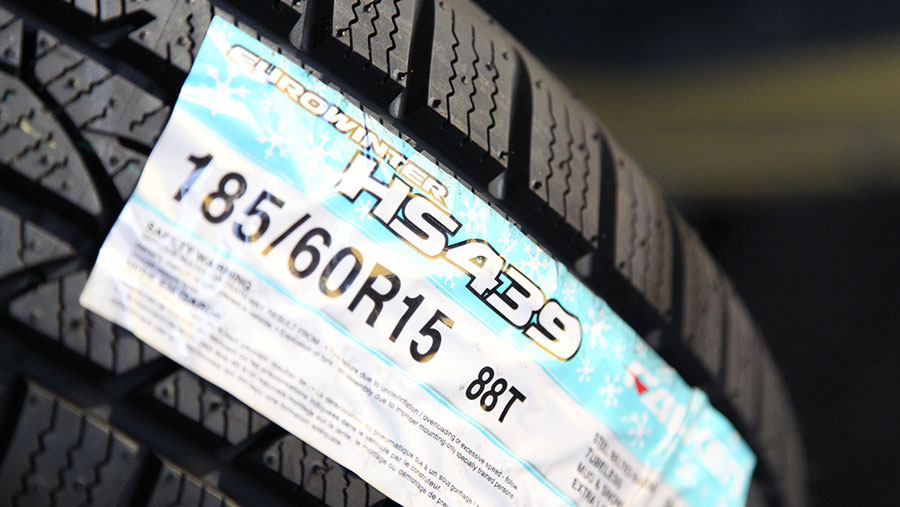Winter tyres on farm vehicles – should you fit them?
 © Isopix/REX/Shutterstock
© Isopix/REX/Shutterstock The UK’s increasingly uncertain weather patterns make the odds of having another snowy period pretty high this winter. But while in most of Europe putting winter tyres on cars and even 4wd trucks is obligatory, in the UK it is an aspect of safety overlooked by most drivers.
Winter tyres dramatically improve performance and safety on snow-covered, icy, frosty and even wet roads. Although many farmers run 4wd vehicles, the all-season tyres fitted to many of them offer little more in the way of traction in icy conditions than standard passenger car tyres.
See also: Ultimate guide to tractor tyre management
What is a winter tyre?
Winter tyres use a different rubber composition from all-season tyres. This includes a greater percentage of natural rubber and silica, improving flexibility and reducing the cold temperature hardening experienced by synthetic rubber tyres in cold conditions.
Winter tyres have smaller tread areas, increasing traction by allowing water to escape from under the tire more easily. But though winter tyres do not prevent skidding on ice and snow, they greatly reduce the risk.
What are the performance benefits of using winter tyres?
Winter tyres are developed to offer superior traction at a temperature of below 7C. They typically provide 25% improved traction in snow over all-season tyres and tests on sheet ice have shown that stopping distances can be more than halved.
In cold, wet conditions, braking distances can be reduced by up to 5m when stopping at 60mph.
Can I use them all year round?
Tyre manufacturers recommend changing back to normal tyres in the warmer months as the softer compound of the winter tyres makes them wear faster. Ideally, they should be installed in November and removed in March.
Can winter tyres be installed on the drive wheels only?
It’s not recommended, as it’s a bit like mixing radials and crossply tyres. In a straight line the tyres will perform normally. However, during cornering or braking, the axle without winter tyres – be it front or rear – will not have the same level of grip, which may cause handling difficulties.
Are there different types of winter tyres?
Yes. There are premium tyres, budget tyres, studded, stud-less, Nordic, European and many more.
In the UK where a typical winter is 40% dry, 45% wet and 15% snow, the recommended tyre for cars and light pick-ups is generally a Premium European winter tyre, which offers excellent all-round performance.
Studded (snow) tyres are generally prohibited on UK roads where snow or ice is not present because of the damage they may cause to the road surface.

© Tim Scrivener
What makes are the best and where can I buy them?
Most big tyre manufacturers produce winter tyres for cars and trucks, including Goodyear, Dunlop, Continental, Michelin, Pirelli, Vredestein, BF Goodrich and Nokian. In the UK seasonal demand accounts for less than 1% of annual tyre sales so stock availability is often limited.
Predicted demand for 2011 is approximately 500,000 tyres, however should it suddenly start snowing even major tyre retailers will need to order them.
What do they cost?
The tyres themselves currently cost 15-20% more than the conventional tyres (prices start at around £60-£80 /tyre*). Most farms will have somewhere to store their tyres once the winter ones are fitted, however, the alternative is to fit the tyres to another set of cheaper steel wheels.
A set of wheels from a scrapyard will cost £40-£50 each. This can be particularly beneficial if the vehicle being equipped with winter tyres has expensive alloy rims.
Additionally, because winter tyres can only be purchased with an aspect ratio is 65 % or above, a smaller diameter rim may be required on some cars with low profile tyres to ensure adequate tyre clearance when turning.
What is the life expectancy for winter tyres?
Three to five years, depending on the mileage they cover.
*Prices correct at time of original publishing date 28 November 2011

